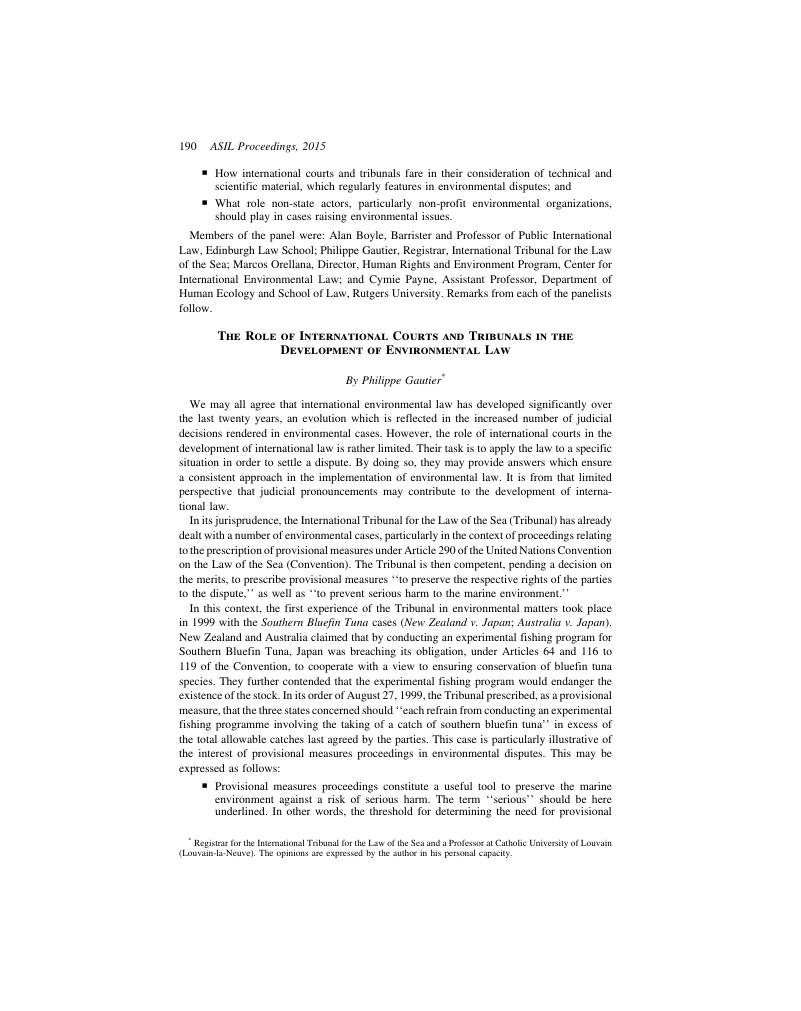No CrossRef data available.
Article contents
The Role of International Courts and Tribunals in the Development of Environmental Law
Published online by Cambridge University Press: 20 January 2017
Abstract

- Type
- The Limits of Judicial Mechanisms for Developing and Enforcing International Environmental Norms
- Information
- Copyright
- Copyright © American Society of International Law 2016
Footnotes
The opinions are expressed by the author in his personal capacity.
References
1 Southern Bluefin Tuna Cases (Nos. 3 & 4) (New Zealand v. Japan; Australia v. Japan ), Case Nos. 3 & 4, Order of Aug. 27, 1999, ¶ 70, ITLOS.
2 Since November 16, 1994, twenty-nine contentious proceedings have been instituted on the basis of Part XV of the Convention.
3 Under Article 297, paragraph 1(c), Part XV is available “when it is alleged that a coastal State has acted in contravention of specified international rules and standards for the protection and preservation of the marine environment . . . .”
4 H.E. Judge Christopher Greenwood, Address to the United Nations General Assembly at the Commemoration of the Thirtieth Anniversary of the Opening for Signature of the 1982 United Nations Convention on the Law of the Sea (Dec. 10, 2012), available at http://www.icj-cij.org/presscom/files/8/17228.pdf.
5 Ireland v. United Kingdom (OSPAR Arbitration), Final Award (Perm. Ct. Arb. July 2, 2003), available at http://www.pca-cpa.org/showpage.asp?pag_id=1158.




